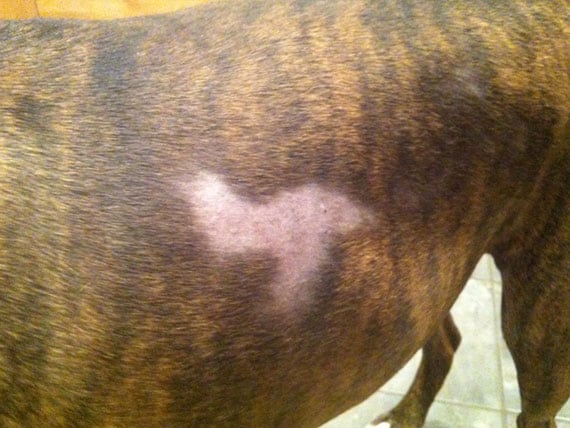Dogs Hair Loss In Patches - Seeing patches of hair loss on your beloved furry friend can be alarming. Loss of hair in dogs can have many causes and can be indicative of underlying health issues. It is important to know the causes of hair loss and what you can do to treat and prevent it.
Hair Loss Patches in Dogs
Causes
Hair loss can be the result of a variety of things. It can be due to an infestation of fleas, mites or ticks, or it can be a fungal infection. Environmental allergens can also play a role in hair loss. Hormonal imbalances, medical conditions such as cancer, and autoimmune diseases such as lupus can also lead to hair loss. Hair loss can also occur due to anxiety or stress.

Symptoms
The symptoms of hair loss vary depending on the cause. In most cases, you’ll notice patches of hair missing, and the skin may be irritated or inflamed. In some cases, there may be scabbing or crusting. There may also be itching, and excessive licking or biting at the affected area.
Treatments for Fur Loss in Dogs
Vet Visits
If you notice hair loss or skin issues in your dog, it is best to take them to the vet for an evaluation. The vet can help determine the cause and recommend a treatment plan. This may include medication, creams, or prescription shampoos. In some cases, hair regrowth may not be possible, but management of symptoms can still keep your pet comfortable and healthy.

Dietary Changes
Your dog’s diet can also play a role in the health of their skin and coat. A diet rich in essential fatty acids, vitamins, and minerals can promote healthy skin and coat. Talk to your vet about the best diet for your dog based on their individual needs and health issues.
Grooming
Grooming your dog can also help with hair loss issues. Regularly brushing your dog’s coat can help distribute natural oils and promote hair growth. Avoid over-bathing your dog, as this can strip their skin and coat of natural oils, leading to dryness and hair loss.
Flaky, Raw Dog Skin with Sores Hair Loss Since Neutering
Causes
Neutering can cause hormonal changes in dogs, which can lead to hair loss. The hair loss can also be due to skin irritation or infection. Some dogs may develop an allergic reaction to the surgical materials used during neutering, leading to hair loss as well.
Treatment
If you suspect that your dog’s hair loss is due to neutering, contact your vet. The vet may recommend hormone therapy or prescribe medications to alleviate any itching or inflammation. Grooming can also help remove any scabbing or crusting and promote hair regrowth.
Dog Hair Loss - Hair Loss Diagnosis in Dogs
Tips and Ideas
Prevention is key when it comes to hair loss in dogs. Keep your dog’s skin and coat healthy by promoting a balanced, nutritious diet, regular grooming, and avoiding over-bathing. Keep your dog’s environment clean and free of fleas, mites, and ticks. If your dog exhibits signs of anxiety or stress, try to identify the cause and make appropriate changes to alleviate the symptoms.
How To Help Your Dog
If you notice hair loss in your dog, take them to the vet for an evaluation. The vet can help determine the cause and recommend a treatment plan. Be patient with any treatment – hair regrowth may take weeks to months to occur. In the meantime, work with your vet to manage the symptoms and keep your furry friend comfortable and healthy.
Hair Loss Patches In Dogs
Prevention
Prevention is key when it comes to hair loss in dogs. Keep your dog’s skin and coat healthy by promoting a balanced, nutritious diet, regular grooming, and avoiding over-bathing. Keep your dog’s environment clean and free of fleas, mites, and ticks. If your dog exhibits signs of anxiety or stress, try to identify the cause and make appropriate changes to alleviate the symptoms.
Treatment
If hair loss occurs, take your dog to the vet for an evaluation. Treatment may include medications, creams, or prescription shampoos. In some cases, hair regrowth may not be possible, but management of symptoms can still keep your pet comfortable and healthy.
In conclusion, hair loss in dogs can have many causes, and it is important to seek veterinary care to determine the underlying issue. Prevention is key, and promoting a healthy diet, regular grooming, and a stress-free environment can go a long way in keeping your furry friend’s skin and coat healthy. By working with your vet to manage any hair loss, you can help keep your dog comfortable and happy for years to come.
Find more articles about Dogs Hair Loss In Patches